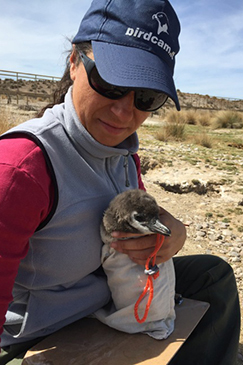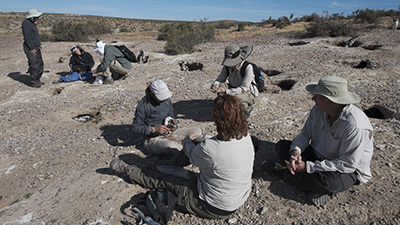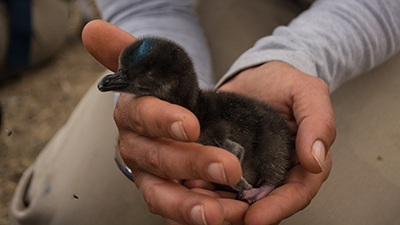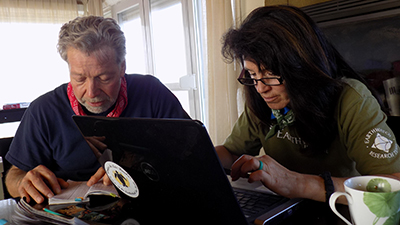プログラム調査日程・空き状況・参加費用等、海外調査に関するお問い合わせは、アースウォッチ・ジャパン事務局にて承ります。info@earthwatch.jp までお気軽にお問い合わせください。
Be among the first people to get a glimpse of what penguins do far out at sea, and learn how this behavior could affect their chicks back on land.

Penguin colonies are a bustling place with adults either disappearing into the ocean to forage for food or returning to feed their chicks. How and where penguins get this food is quite variable and depends on several environmental factors. This foraging behavior is crucial to the species’ survival as it can shape the fate of the penguin chicks. Join a team of scientists making cutting-edge use of technology to solve this mystery and gather data that can inform how we work to conserve this beloved bird.
Travel to the rookeries—nesting colonies—on the dramatic rocky shores of Argentina’s Golfo San Jorge to investigate. Spend your days in a national park, getting up close and personal with penguins in a colony with about 9,000 breeding pairs.
While the land within the national park has government protection, most of the waters off its coast don’t—which is why researchers need to document where these charming birds go and what they do out at sea. With that knowledge, they can understand which parts of the ocean most need protection to keep penguin populations strong.
Earthwatch volunteers will help with monitoring penguin nests through the breeding season, tagging penguins, and mapping the location of each nest in the colony. They will also select 50 or so sets of penguin parents to track with sophisticated underwater behavioral recorders. Volunteers will help in the process of selecting adult penguins to be deployed with these devices, which will capture every move the penguins make. Additionally, volunteers will help researchers get a detailed picture of how and where this bird population forage and feed their young.
ボランティアの役割
Spend your days surrounded by penguins as you survey their nests, monitor their chick development and attach tiny devices to them. You will help the researchers:

The first team of the year will help immensely with setting up the project for the season, walking the entire penguin colony, marking and mapping the location of every nest that will be monitored throughout the entire breeding season (approximately 200 nests) . You’ll also help the researchers tag penguins.. The remaining teams will return to these penguins’ nests every day to monitor their development, record lay dates, hatching dates, growth of chicks, etc.

Beginning when penguin chicks are about 5 days old (mid- to late November), teams will help safely attach tracking devices that record the penguins’ every move in the water. They’ll also make sure to get those devices back once penguins return from their foraging trips.

You’ll help log the critical observational data you collect every day at the penguin colony.. The scientists are also researching another important ocean bird—the giant petrel. You’ll help them sort through the images they’ve collected and help with census from images.
